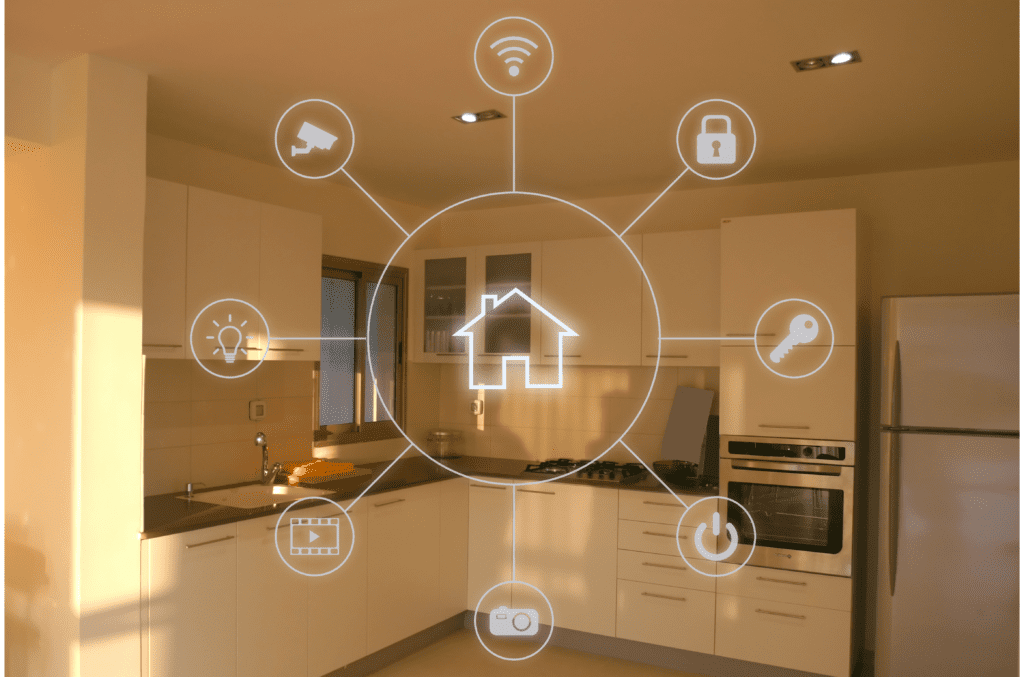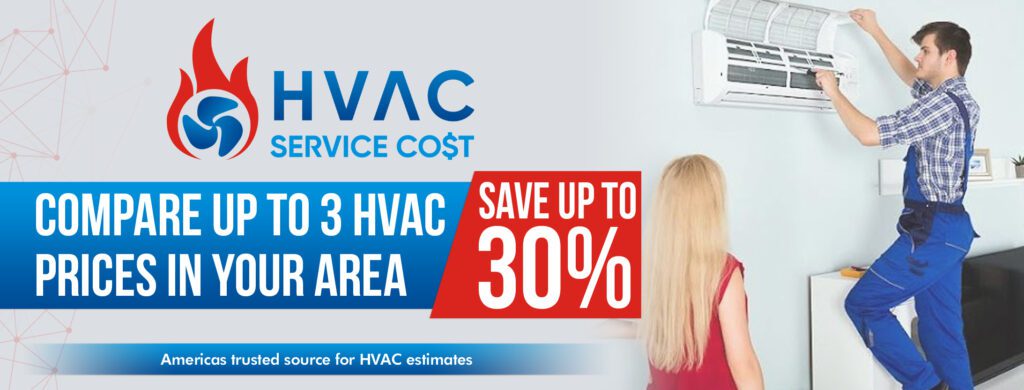
Smart Home Technologies for Energy Management
In today’s digitally connected world, energy management has become more interactive, intelligent, and user-friendly than ever before. Smart home technologies are at the forefront of this revolution, giving homeowners unprecedented control over their energy consumption. By utilizing advanced devices such as programmable thermostats, smart lighting systems, energy monitors, and a host of other IoT (Internet of Things) innovations, individuals can make significant strides in energy efficiency, often with the convenience of managing it all from a smartphone or tablet.
Programmable Thermostats: The Gateway to Energy Efficiency
The modern programmable thermostat is a far cry from the basic temperature dials of the past. These sophisticated devices can learn from your habits and adjust heating and cooling automatically to suit your lifestyle. They can detect when you’re away from home, shifting your HVAC system into a more economical mode and ensuring that you’re not wasting energy heating or cooling an empty house. With the ability to set specific temperature zones throughout your home, they work seamlessly with your HVAC system to provide comfort where it’s needed, reducing energy consumption overall.
Why Programmable Thermostats Work for Energy Efficiency
The logic behind programmable thermostats is simple yet powerful: they optimize your home’s heating and cooling systems based on your schedule. By aligning your HVAC system’s output with your daily routine, these devices ensure that energy isn’t wasted heating an empty home or cooling a room that isn’t in use.
- Effortless Savings: By setting a schedule that reduces HVAC use when you’re away or asleep, you can cut down on unnecessary energy use. Many models offer different settings for weekdays and weekends, allowing for flexibility with your routine.
- Zone-Based Comfort: Some advanced thermostats can control different zones in your home, meaning you can heat or cool specific areas as needed, further increasing efficiency and comfort.
- Remote Control and Monitoring: With Wi-Fi-enabled models, you can adjust settings from anywhere, ensuring that you’re always in control of your energy use, even if your plans change.
- Learning Capabilities: Smart thermostats like Google Nest learn from your behavior and adjust automatically. They can even use geofencing to detect when you’re home or away.

Best Models for Energy Efficiency
When it comes to selecting a programmable thermostat, there are several highly regarded models known for their efficiency and user-friendliness:
Google Nest Learning Thermostat: Known for its learning algorithms, the Nest thermostat adapts to your temperature preferences and programs itself. It also provides energy usage reports so you can see how much you’re saving.
Ecobee SmartThermostat: Ecobee offers room sensors to manage hot and cold spots in the home and integrates with most smart home systems. It also supports voice control with Alexa built-in.
Honeywell Home T9: With remote sensors and smart room feature, Honeywell’s T9 is adept at ensuring even temperatures throughout the home, providing comfort where it’s needed most.
Emerson Sensi Touch Wi-Fi Smart Thermostat: For those seeking a budget-friendly option without sacrificing functionality, the Sensi Touch offers an easy-to-use interface and flexible scheduling.
Energy Star Certification: A Seal of Approval
When choosing a programmable thermostat, look for models with Energy Star certification. This label means the thermostat has met stringent energy efficiency performance levels set by the EPA. Energy Star-certified thermostats are independently certified to save energy and can save homeowners an average of $50 on annual energy bills.
Incentives and Rebates
To encourage the adoption of energy-efficient appliances, many utility companies offer rebates for purchasing programmable thermostats. It’s always worth checking with your local provider to see if they have such incentives, which can offset the upfront cost of the device.
Adopting a programmable thermostat is a move towards smarter energy management. It’s an investment that not only adds immediate comfort and convenience to your home but also contributes to long-term energy savings. With the range of advanced features and models available today, there’s a programmable thermostat to fit every home and lifestyle, ensuring that energy efficiency and cost-effectiveness are within reach for energy-conscious homeowners.



Shining a Light on Savings with Smart Lighting
Lighting constitutes a significant portion of home energy usage, but smart lighting technologies offer a bright solution. Smart LED bulbs, which consume a fraction of the energy of traditional incandescent bulbs, can be controlled remotely, scheduled to turn on or off at certain times, or even adjust their output based on natural light levels in the home. Integrating motion sensors can further enhance energy savings by ensuring lights are only on when needed.
Smart lighting goes beyond mere convenience; it’s about shaping the energy footprint of your home. By replacing conventional bulbs with smart lighting solutions, homeowners can enjoy a more energy-efficient and customizable lighting environment. Here’s why smart lighting is shining a new light on energy efficiency and how it’s transforming homes into smarter, more responsive spaces.
The Luminous Benefits of Smart Lighting for Energy Efficiency
- Reduced Energy Consumption: Smart LED bulbs are far more energy-efficient than traditional incandescent bulbs. They use up to 75% less energy and can last 25 times longer.
- Adaptive Brightness: Smart lighting systems can adjust the brightness based on the time of day or available natural light. This means using just the right amount of light when it’s needed, contributing to a reduction in power usage.
- Presence Detection: With motion sensors, smart lights can turn on and off automatically, eliminating the energy waste from lights left on in unoccupied rooms.
- Scheduled Illumination: Homeowners can schedule lights to turn off automatically at bedtime or when the home is typically unoccupied, ensuring lights aren’t left on unnecessarily.
- Remote Control: If you forget to turn off a light before leaving home, you can do so from your smartphone, regardless of your location.
How Smart Lighting Systems Work
- Integration with Home Networks: Smart lighting products connect to your home Wi-Fi network, allowing them to be controlled through mobile apps or voice commands via smart home assistants like Amazon Alexa, Google Assistant, or Apple HomeKit.
- Bulb Types: There are various types of smart bulbs, including LED strips, spotlights, and traditional bulb shapes that fit existing fixtures. They come in a range of colors and color temperatures, which can be changed according to mood or activity.
- The Role of Hubs: Some smart lighting systems require a central hub that connects to your router, enabling communication with the smart bulbs. Others connect directly to Wi-Fi without the need for an additional device.
- Automation Through Apps: Manufacturers provide apps that enable not just remote control but also the creation of complex automations. These can include timing schedules, reactions to other smart home devices, or even programming the lights to simulate your presence when you’re away from home.
- The Power of Voice and Routine: Integration with smart speakers allows you to control lighting with simple voice commands, while routines can trigger lighting changes with other activities, like locking doors or adjusting your thermostat.
- Enhancing Efficiency with Scenes and Moods: Smart lighting systems enable the creation of “scenes” or “moods” that adjust multiple lights simultaneously to predefined settings. For example, a “movie night” scene could dim the lights, while a “wake-up” scene gradually increases brightness to simulate a sunrise.


Energy Monitors: Your Energy Consumption at a Glance
One of the most powerful tools in energy management is knowledge. Energy monitors provide real-time feedback on electricity usage, both overall and by individual appliance. This immediate insight allows homeowners to identify which devices are the most energy-intensive and adjust usage patterns accordingly. Some monitors can even provide predictive costs, helping to avoid bill shock at the end of the month.
Understanding Energy Monitors
Energy monitors are becoming increasingly popular in homes seeking to reduce their carbon footprint and energy bills. These devices provide a granular look at where and how energy is consumed in your home, making them an indispensable tool for energy-conscious homeowners.
An energy monitor is a device that provides real-time information about your home’s energy consumption. By delivering data directly to your smartphone or computer, you can observe how much electricity is being used, down to individual appliances. This insight enables you to make informed decisions about your energy usage and helps identify areas where you can save.
How They Work
- Installation: Most energy monitors are easy to install. Some require clamping a sensor onto the power cable coming into your home, while others simply plug into an outlet and sync with individual appliances.
- Data Analysis: Once installed, energy monitors measure the flow of electricity and report that data back to you in an understandable format, often in real-time. This information can include overall consumption, estimated costs, and even the carbon footprint of your energy usage.
- Appliance Detection: Advanced monitors can sometimes detect individual appliances by recognizing their unique electrical signatures, providing you with an itemized breakdown of energy consumption.
- Alerts and Notifications: Many energy monitors can be set to alert you when your usage hits certain thresholds, or if it detects an appliance that’s been left on for an unusually long time, helping to prevent wasteful energy use.
- Integration with Smart Homes: Some energy monitors can integrate with other smart home devices. For example, if your energy usage spikes, your smart thermostat can adjust the heating or cooling to compensate.
Other IoT Innovations: The Building Blocks of a Smart Home
The IoT ecosystem includes a wide array of devices that can contribute to energy management. Smart power strips and plugs can cut power to devices that are in standby mode but still drawing energy, known as ‘vampire power’. Smart window coverings can adjust automatically to insulate the house against heat or cold. Even smart appliances are getting in on the act, with features designed to run at off-peak times to save on energy bills.


Integration and Interconnectivity: The Heart of Smart Energy Management
The true power of these technologies lies in their ability to work together. A smart home hub can integrate various devices, allowing them to communicate with each other and create an ecosystem of energy efficiency. For example, a thermostat can signal to smart blinds to close if the room gets too hot, or a smart washer can start its cycle during the cheapest electricity rate of the day.
Integrating HVAC Systems with Home Energy Management
While monitoring energy usage lays the foundation for a more efficient home, the real magic happens when you integrate your heating, ventilation, and air conditioning (HVAC) systems with your home energy management strategies.
Smart HVAC: Beyond Simple Comfort
Today’s smart HVAC systems do more than keep your living space comfortable; they learn your patterns and preferences. Integration with home energy monitors can help these systems operate at peak efficiency by:
- Adapting to Your Schedule: Smart HVAC systems can adjust temperatures based on when you’re typically home, avoiding energy waste when the house is empty.
- Responding to Real-Time Data: With energy monitors tracking consumption, your HVAC can dial back when usage spikes, ensuring you stay within a budget-friendly energy use threshold.
- Maintenance Alerts: Smart systems can predict when filters need changing or when efficiency is dropping, signaling the need for maintenance before it becomes costly.
Zoned Heating and Cooling
Zoning systems can also play a significant role in managing home energy use. By dividing your home into zones, you can heat or cool only the areas in use, rather than expending energy on empty spaces. Energy monitors can provide data to help you determine the most effective zoning configurations.
Upgrades That Pay Off
Investing in HVAC upgrades, like energy-efficient furnaces, heat pumps, or air conditioning units, often pays off in the long run. While the upfront cost may be higher, the reduction in energy bills over time, coupled with the increased comfort and convenience, can make these upgrades a wise decision for energy-conscious homeowners.
Tax Credits and Incentives
It’s worth noting that many governments offer tax credits, rebates, or other incentives for energy-efficient home improvements, including HVAC systems. This can reduce the net cost of any upgrades and speed up the return on investment. Homeowners can use their energy monitors to provide data that may qualify them for these incentives.
Long-term Benefits
The synergy between smart HVAC systems and energy monitors can lead to substantial long-term benefits. Not only can homeowners enjoy reduced energy bills and a more comfortable living environment, but they can also take pride in their proactive steps towards sustainability.
Energy efficiency is no longer an added bonus—it’s a crucial element of modern homeownership. By embracing smart technologies and integrating systems like HVAC with energy monitors, homeowners can enjoy a comfortable, cost-effective, and environmentally friendly living space. As we continue to seek solutions for energy management, the convergence of technology and proactive strategies remains a guiding light towards a greener, more sustainable future.



Leveraging Renewable Energy Sources
Another aspect that energy-conscious homeowners can explore is the integration of renewable energy sources with their HVAC systems. Solar panels, for instance, can be used to power HVAC systems, reducing reliance on the grid and lowering energy costs.
Solar Power: A Bright Idea for HVAC
- Reduction in Energy Bills: Solar panels can significantly cut down on electricity costs. Excess energy generated can often be sold back to the grid, potentially turning your HVAC system into a source of income.
- Eco-Friendly: By using a clean energy source, homeowners reduce their carbon footprint and contribute to a healthier environment.
- Energy Independence: Solar energy can lead to greater energy independence, reducing vulnerability to power outages and electricity price fluctuations.
Geothermal Systems: Tapping into the Earth’s Heat
- Consistent Temperatures: Geothermal HVAC systems use the stable temperatures of the ground to heat and cool the home, offering consistent comfort year-round.
- Efficiency: These systems are among the most energy-efficient options available, as they require less energy to transfer heat from or to the ground.
- Longevity: Geothermal systems typically have a longer lifespan than traditional HVAC systems, making them a worthwhile investment for the future.
Hybrid Systems: Best of Both Worlds
Combining solar power with geothermal heat pumps can result in a hybrid system that maximizes energy efficiency and cost savings. Such systems can provide reliable heating and cooling with minimal environmental impact.
Smart Ventilation and Air Quality Control
Intelligent ventilation systems can ensure that air quality remains high without unnecessary energy expenditure by:
- Regulating Airflow: Smart ventilation systems can adjust the flow of air in and out of the home based on air quality sensors, maintaining freshness without the energy costs associated with constant HVAC operation.
- Reducing Humidity: Controlling humidity levels is crucial for comfort and energy efficiency, as high humidity can make temperatures feel warmer than they are.



Connecting with Smart Home Assistants
Modern HVAC systems can often be controlled by smart home assistants, allowing homeowners to adjust settings through voice commands or smartphone apps. This convenience can lead to more mindful energy use, as it’s easier to make adjustments as needed.
Future-Proofing Your Home
Incorporating smart HVAC technologies and renewable energy solutions not only benefits current homeowners but also adds value to a property. Future-proofing a home in this way can be an attractive selling point if the property is put on the market.
Smart home technologies offer a pathway to not only manage energy consumption more effectively but also to engage with our living spaces in a way that enhances comfort, convenience, and care for the environment. For the energy-conscious homeowner, integrating these technologies can lead to substantial savings and a reduced carbon footprint, all while keeping the home at the forefront of technological innovation. As we continue to embrace these smart solutions, we can look forward to a future where our homes are not just shelters, but active participants in our quest for a sustainable and energy-efficient lifestyle.
Whether you’re considering upgrading to a programmable thermostat, exploring solar panels, or interested in the latest in smart home HVAC technologies, we are here to connect you with customized, reliable quotes for local HVAC services. The journey towards an energy-efficient home is a worthy investment, and with HVAC Service Cost, you’re one step closer to achieving it.
COMPARE QUOTES NOW


Leave a Reply